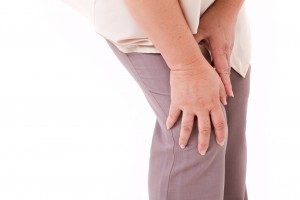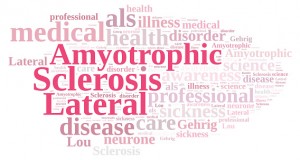Your Gut Can Make You Slim
 Getty Images
Getty Images
Consider this: Right now, as you're sitting there, there's a battle raging in your belly. Some 1,000 species of bacteria are duking it out, trying to establish dominance. Why should you care? Because whether the good bacteria in your gut or the bad triumph doesn't just decide how well you digest your dinner, respond to allergens and fend off diseases—it also helps determine how much weight you're likely to gain. Or lose.
Basically, it all begins with probiotics and prebiotics, components of food believed to play an important role in improving gut health. Probiotics are a type of good bacteria, similar to the ones that already reside in your gut. Ingesting these organisms aids digestion and helps change and repopulate intestinal bacteria to balance what doctors refer to as "gut flora." Prebiotics are plant-fiber compounds, also found in food, that pass undigested through the upper part of the gastrointestinal tract and help stimulate the growth of good bacteria. When pre- and probiotics are combined, they become an intestinal power couple (or, in blunter terms, they kick nutritional butt).
Fermented foods deliver probiotics directly to the gut. A cup of yogurt a day? It's a nice start. Look for products that say "live and active cultures" on the label, and be careful when it comes to fruit-infused flavors: Some are loaded with sugar, which can feed bad bugs, so be sure to check the ingredients and aim for fewer than 15 grams per serving. For even more probiotics, try Greek yogurt or kefir, a tangy dairy drink that's packed with good bugs. A 2011 Harvard study found that yogurt was more strongly linked to weight loss than any other health food. In fact, people who ate an extra serving a day lost nearly a pound every four years.
Gut check #3: Down Some Fiber
It does more than fill you up: Research shows that foods that are high in fiber help promote the growth of friendly bacteria. Case in point: In a University of Illinois study, people who ate high-fiber snack bars experienced a growth of anti-inflammatory bacteria in their bellies.
Eat an assortment of foods to encourage a more varied metropolis in your belly. Recent studies suggest that the intestines of lean people look more like bustling cities than sleepy towns. (Translation: They're densely populated and diverse.) One study showed that individuals who had a healthy weight, body mass index, waist circumference and blood sugar level were more apt to have high levels of three different types of bacteria—Firmicutes, Bifidobacteria and Clostridium leptum. What's more, in a pair of French studies, people with diverse gut microbiomes were less likely to be obese or at risk of diabetes. Plus, their intestinal ecosystems were home to fewer pro-inflammatory bacteria. It's easy to change up your meals: If you had salad with grilled chicken yesterday, for example, go with a fish taco or a tofu stir-fry today.
What you don't eat is every bit as crucial as what you do add to your diet. Keep your gut flora fit by cutting back on these offenders.
Fatty and sugary foods not only tend to lack fiber—which is ideal food for the microbiome—but can also cause bad bacteria to thrive. And let's face it: If you're pounding that bag of potato chips, chances are you're not munching on celery sticks, blueberries and other gut-friendly eats.
A diet heavy in fat and protein (such as meat and cheese) feeds a type of bacteria, Bilophilia, that has been linked to inflammation. Lawrence David, PhD, assistant professor at Duke University's Institute for Genome Sciences and Policy, saw the levels of this bacteria shoot up in study participants scarfing ribs and brisket, but not in those eating squash and lentils. Dr. Kellman suggests limiting red meat to once a week. It's smart for your heart—and hips!
-
The Ultimate Staples for Healthy Eating
A healthy diet not only reduces your risk for disease, it also
-
5 Excuse-Kicking Weight Loss Tips For Busy People
Weight loss is an easy thing to do but I admit that it takes time. Thi
-
Does Your Body Type Affect Your Weight Loss Goals?
This article addresses some of the key i
-
5 Easy Ways To Jump Off Your Weight Plateau!
Dont expect a magic pill to suddenly mak
-
Healthy diet leads to a better and free sex life
Sleep well, and do free sex. People who lead a healthy lifestyle h
-
Eating 9 Low Calorie Foods Lose Weight
As soon as you start with starving yours
- DON'T MISS
- Ultrametabolism Makes Losing Weight Easy
- Losing Weight The Natural Way
- Some Healthy Weight Loss Tips For Quick Weight Loss!
- Proactol – Proven Alternative To Prescription Weight Loss Pills
- Picking A Weight-loss Plan for you personally
- Create A Dazzling Silhouette With These Fabulous Weight Loss Tips
- Weight Watchers Vs. Medifast
- Greasy Burgers Could Save America
- Top Cardiovascular Workouts For Rapid Weight Loss
- High protein diet boosts cardiovascular health




